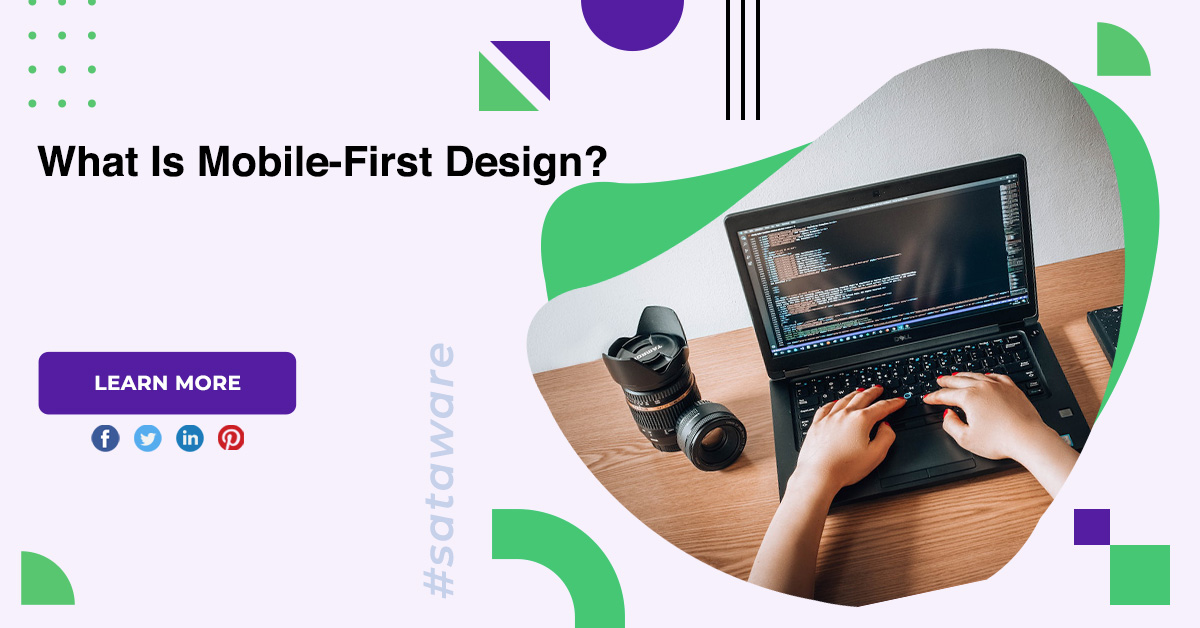Mobile First, developers have the flexibility to scale up rather than scale down. The core design elements may be incredible on a desktop platform, providing a really great user experience. when this design needs to be adapted for mobile, you realize that none of the technology that makes the desktop user experience so great can scale down well to mobile devices.
Mobile-first design
Why does mobile matter?
Whether it’s browsing the internet on the train in the morning, checking your emails while waiting for an appointment, or listening to music at the gym, mobile phones are deeply embedded in our daily routines. Each speck of downtime is one we can use to update ourselves with our network and the news, or even order that one thing from Amazon that we keep forgetting to buy.
What does this mean?
We’re increasingly relying on mobile apps and devices for integral parts of our lives. This increasing reliance on mobile apps and devices in time will affect our perception and expectation of the experience these apps should and will deliver.
How instagram mastered mobile first?
Instagram was released by cofounders Kevin Systrom and Mike Krieger as a free mobile app, with a few filters and the ability to upload your square photo into what was for most of us back then considered a virtual abyss.
But how did they get there
A simple, straightforward interface allows users to take a variety of actions, some of which can be complex, in a very intuitive manner. Instagram’s evolution and success as primarily a mobile app serves as a testament to mobile-first design. While Instagram’s priority is, and remains, mobile first, it’s desktop version offers the same sleek design, encouraging users to switch back and forth from mobile devices to their desktop.
Software development lifecycle & mobile-first design
If you opt to take a mobile-first approach, understanding whether you’re going to move to a full-fledged desktop platform in the future can be key in planning and executing design plans. Depending on what your workflow and goals are, you may layer the desktop design in with the application design, once you’ve finalized developing and testing the app version.
Phases of mobile-first design
Planning & vision crafting – Research and plan your app’s functionality, design, and purpose. In this phase you combine, organize, and structure a plan for what problem the app will solve, who the target will be, and what capabilities are the core functionalities.
Technical assessment – Analyze the systems you want your application to rely on. Getting a solid understanding of the systematic elements that will form the foundation for your application to live on is vital in this stage.
Design and prototype – Transform what may be a set of ideas on paper into visualized, tangible representations of what you want your application to look like, to feel like, and to accomplish. Designing with mobility in mind- determine what flows will be intuitive and easy for mobile users.
Development – Here’s where you can breathe life into your design. The coding for the app begins here.
Test – This is where our model may be a bit unconventional for some organizations. During the test phase, you may opt to automate tests, manually test, release a beta, or even host a user group to get feedback and fresh eyes on your application.
Conclusion
Increasing numbers of web users across the globe have shifted from desktop to mobile devices for accessing the web and the trend shows no sign of stopping. Consequently, it makes sense for designers to develop websites keeping the mobile audience as a priority.




















Discussion about this post